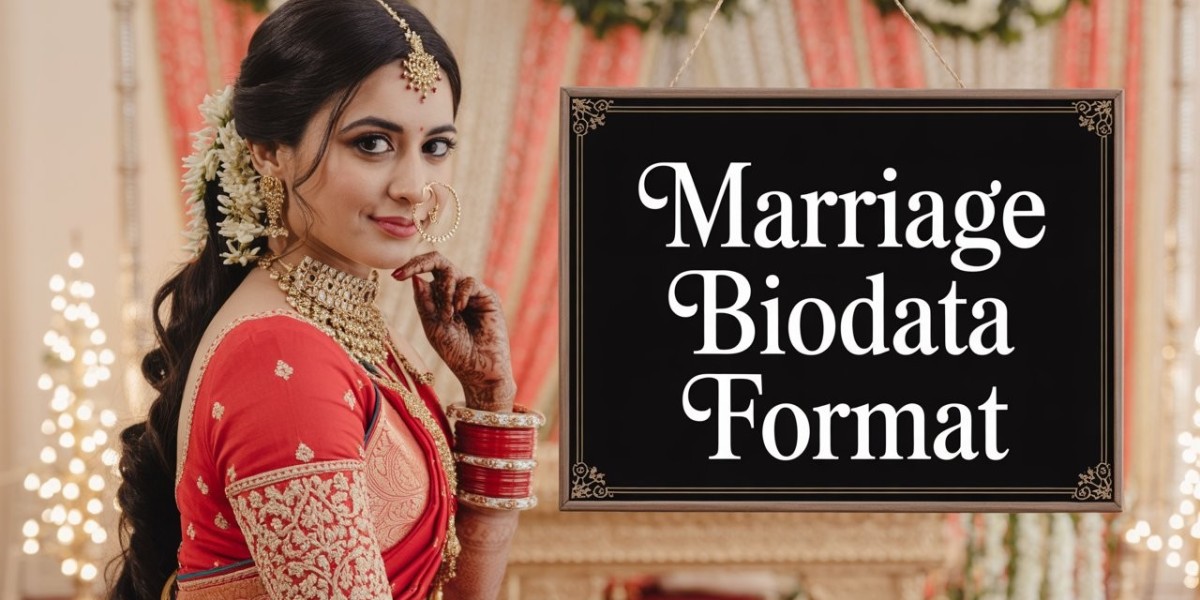In Indian culture, arranged marriages continue to be a widely followed tradition. While compatibility and mutual understanding remain central to any successful marriage, the initial process often begins with something quite simple yet incredibly important — the biodata. When families begin the search for a suitable match, a neatly prepared bio data for marriage simple form in Hindi can make all the difference in creating a strong first impression.
In this guide, we’ll explore what a marriage biodata is, why presenting it in Hindi matters, and how to create a simple and effective form that can appeal to families and potential matches alike. We’ll also share a ready-to-use Hindi template format that is culturally relevant, clear, and well-structured.
Why Use a Biodata Form in Hindi?
While English is widely spoken in urban centers, many Indian families, especially in rural or semi-urban regions, still prefer documents in Hindi — India’s most widely spoken language. This ensures that the biodata is clearly understood by every family member, especially elders, who play a key role in match selection.
Creating a bio data for marriage simple in Hindi bridges the gap between modern design and traditional expectations. It shows respect for one’s cultural roots and allows families to process the information without any language barrier. Moreover, a simple and uncluttered format removes unnecessary complexity, making the biodata easy to scan, share, and store.
What Should Be Included in a Simple Hindi Marriage Biodata?
A well-structured simple biodata for marriage includes the following key sections, which can easily be translated into Hindi:
1. व्यक्तिगत जानकारी (Personal Details)
This section includes basic yet vital personal information such as:
पूरा नाम (Full Name)
जन्म तिथि (Date of Birth)
उम्र (Age)
लिंग (Gender)
जाति / उपजाति (Caste/Sub-caste)
धर्म (Religion)
जन्म स्थान (Place of Birth)
वैवाहिक स्थिति (Marital Status – Single/Divorced/Widowed)
2. पारिवारिक विवरण (Family Details)
Since Indian marriages are often alliances between families, it’s important to include marriage biodata details such as:
पिता का नाम और पेशा (Father’s Name & Occupation)
माता का नाम और पेशा (Mother’s Name & Occupation)
भाई / बहन की संख्या (Number of Brothers/Sisters)
परिवार की पृष्ठभूमि (Family Background)
3. शैक्षणिक योग्यता (Educational Qualification)
Education is one of the first factors families consider. List academic achievements in this section, such as:
कक्षा 10 से लेकर उच्चतम शिक्षा तक (10th to highest qualification)
कॉलेज / विश्वविद्यालय का नाम (Institution Names)
प्राप्त अंकों का विवरण (Marks, Grades or CGPA)
4. पेशा और आय (Occupation & Income)
For working individuals, professional details matter a lot:
पेशा / व्यवसाय (Job or Business)
कंपनी का नाम (Company Name)
वर्तमान पद (Current Position)
मासिक/वार्षिक आय (Monthly/Annual Income)
कार्य स्थल (Work Location)
5. वैवाहिक अपेक्षाएँ (Marriage Preferences)
This section outlines the individual’s expectations for their life partner:
वांछित आयु सीमा (Preferred Age Range)
शैक्षणिक योग्यता (Education Preference)
जाति / धर्म की प्राथमिकता (Caste/Religion Preference)
स्थान की प्राथमिकता (Preferred Location)
अन्य विशेष अपेक्षाएँ (Other Expectations)
6. संपर्क जानकारी (Contact Information)
पता (Address)
मोबाइल नंबर (Mobile Number)
ईमेल (Email ID)
वैकल्पिक संपर्क (Alternate Contact – Parent/Sibling)
Hindi Format Sample: Shadi Biodata (शादी बायोडाटा)
Below is a simple shadi biodata format in Hindi that anyone can follow:
शादी हेतु बायोडाटा
व्यक्तिगत जानकारी:
पूरा नाम: राहुल शर्मा
जन्म तिथि: 15 मार्च 1995
उम्र: 30 वर्ष
लिंग: पुरुष
धर्म: हिन्दू
जाति: ब्राह्मण
वैवाहिक स्थिति: अविवाहित
पारिवारिक विवरण:
पिता का नाम: श्री महेश शर्मा (सेवानिवृत्त शिक्षक)
माता का नाम: श्रीमती सुधा शर्मा (गृहिणी)
भाई-बहन: एक छोटा भाई (इंजीनियर)
शैक्षणिक योग्यता:
B.Sc. (फिजिक्स) – दिल्ली विश्वविद्यालय
M.Sc. (फिजिक्स) – बनारस हिन्दू विश्वविद्यालय
पेशा और आय:
वर्तमान पद: सहायक प्रोफेसर
संस्था: कानपुर विश्वविद्यालय
मासिक आय: ₹75,000
कार्य स्थल: कानपुर
वैवाहिक अपेक्षाएँ:
आयु: 25-30 वर्ष
शिक्षा: स्नातक या उससे अधिक
स्थान: उत्तर प्रदेश
धर्म/जाति: हिन्दू ब्राह्मण
संपर्क विवरण:
मोबाइल: 9876543210
ईमेल: rahulsharma@email.com
पता: 123, गोमती नगर, लखनऊ, उत्तर प्रदेश
This shadi biodata example is both respectful and informative, ideal for sharing with relatives or via matrimonial websites.
Making Your Marriage Bio Data Online
In the digital age, many users prefer creating their marriage bio data online for better formatting and easier sharing. There are websites and apps that offer customizable Hindi templates, allowing you to download biodata in PDF or Word format.
Some benefits of creating a marriage biodata online:
Ready-made Hindi fonts and structure
Professional design with traditional tone
Easy PDF export for WhatsApp or email sharing
Mobile-friendly formats for on-the-go use
Be cautious about sharing personal information online and always verify the security and privacy of platforms.
Tips for a Perfect Hindi Marriage Biodata
Here are some expert tips to help your biodata stand out:
Use a clean, readable font like Mangal or Kruti Dev for Hindi.
Avoid lengthy paragraphs – bullet points are better.
Include a recent, formal photograph, preferably passport-size.
Stick to truthfulness – false claims about income or background can lead to mistrust.
Proofread carefully to avoid grammar or spelling errors.
Keep it to one page, unless absolutely necessary.
Cultural Sensitivity Matters
The presentation of biodata carries emotional and cultural significance. A well-crafted biodata in Hindi aligns with traditional values, especially when dealing with elders who might not be tech-savvy or fluent in English. By embracing your native language, you build a sense of familiarity and trust — key ingredients in the matchmaking process.
From the first glance, a structured biodata written in Hindi reflects simplicity, authenticity, and family values. Whether shared by hand, through email, or via marriage biodata online platforms, it remains a strong foundation for lifelong connections.
Conclusion
Creating a bio data for marriage simple form in Hindi is a thoughtful step toward blending tradition with clarity. It simplifies communication between families, honors regional language preferences, and ensures that important marriage biodata details are well presented.
As matchmaking becomes more digitized yet culturally rooted, it’s important to strike a balance between modern convenience and traditional expression. A clear, respectful, and comprehensive biodata is your first handshake with a future family — make it count.






